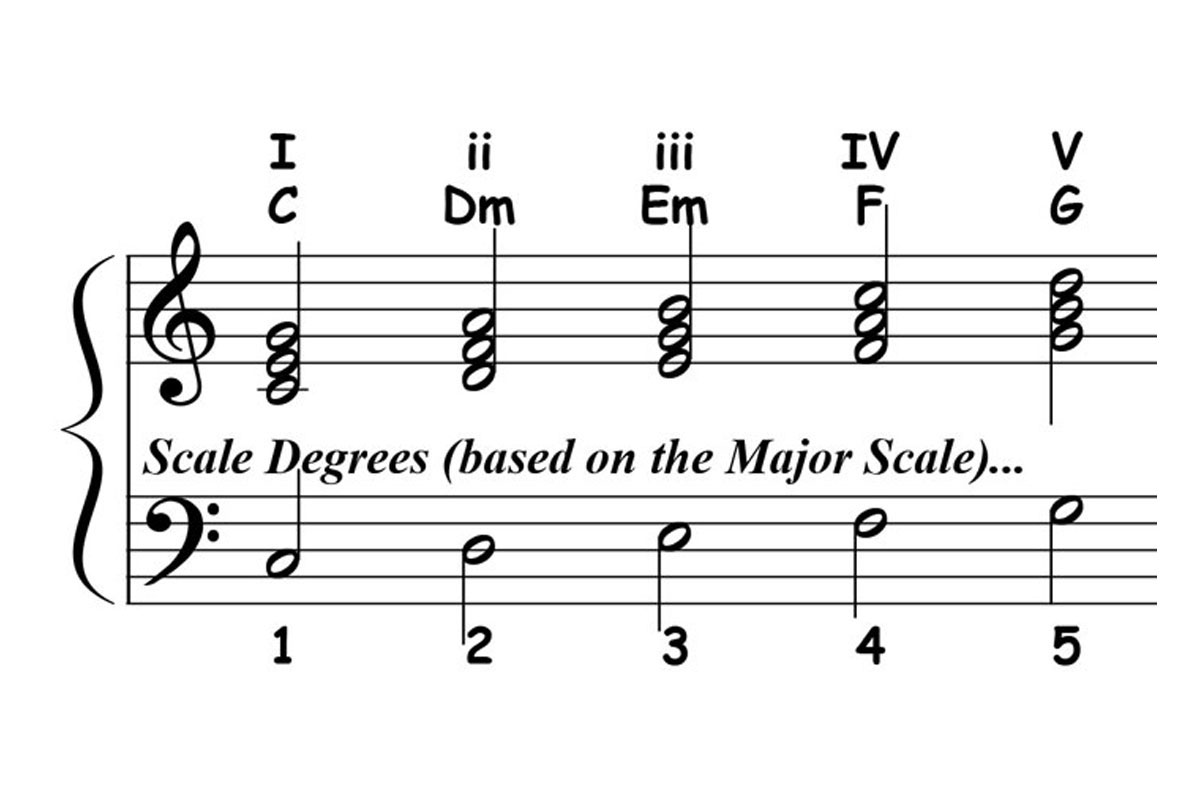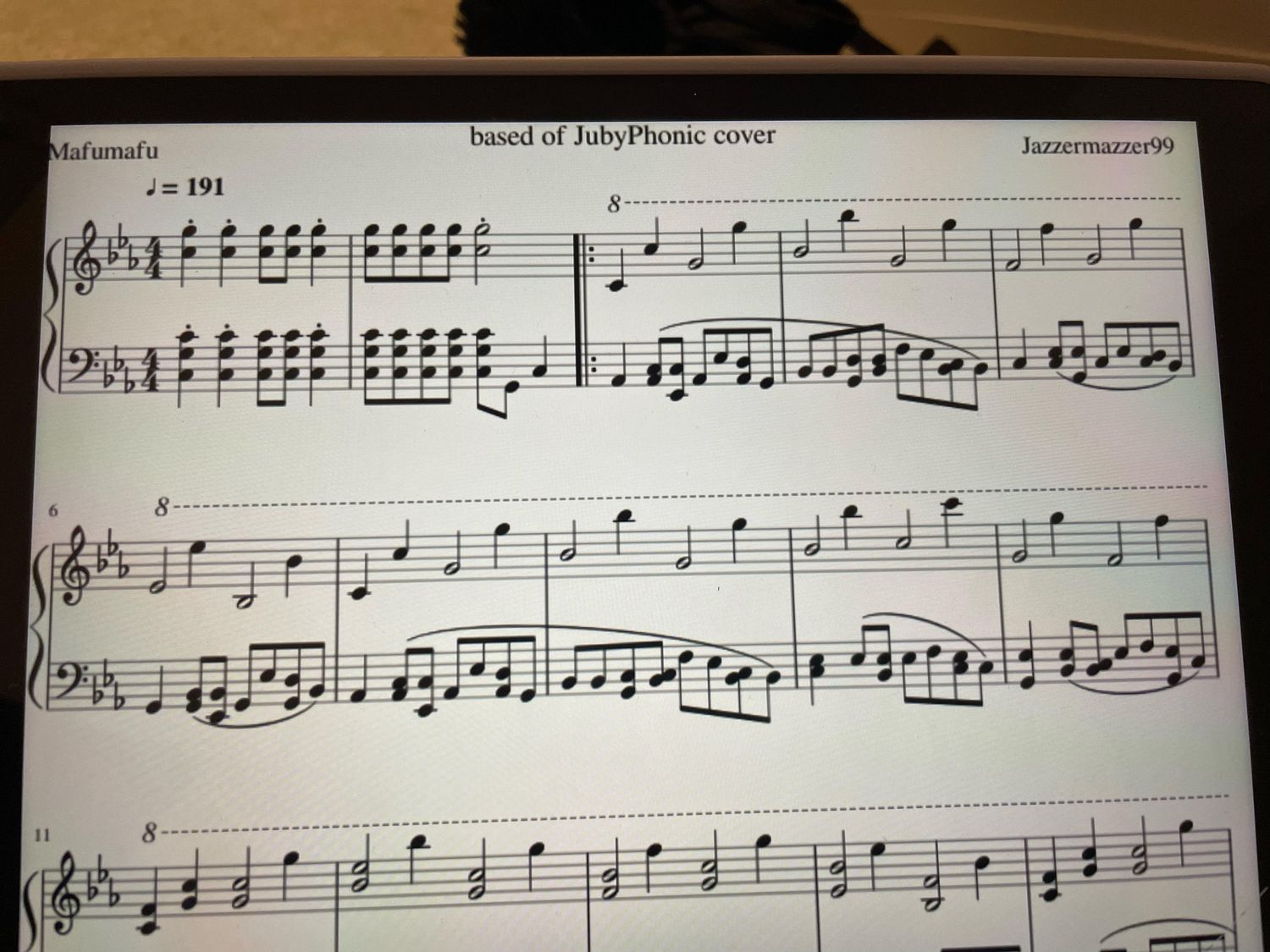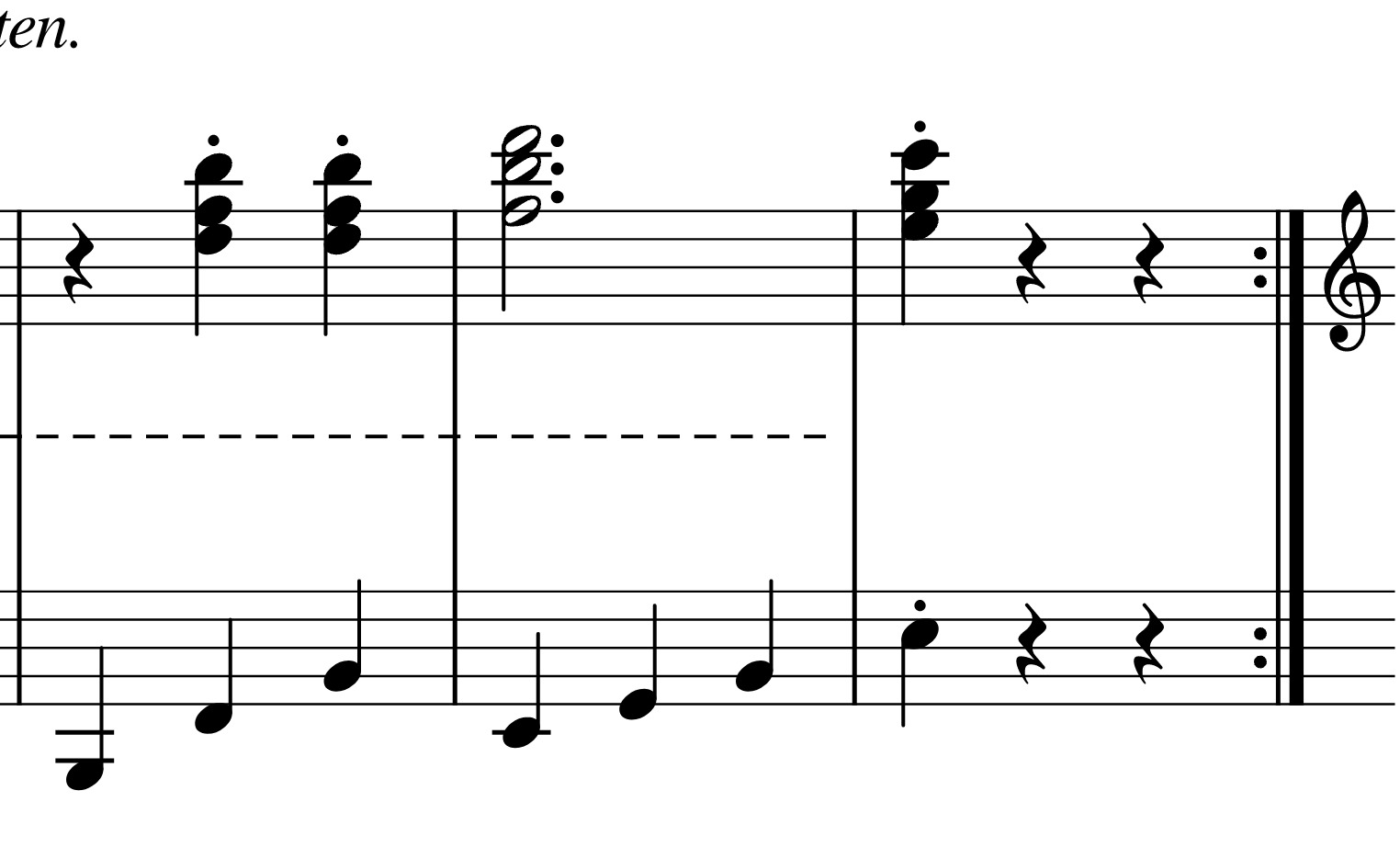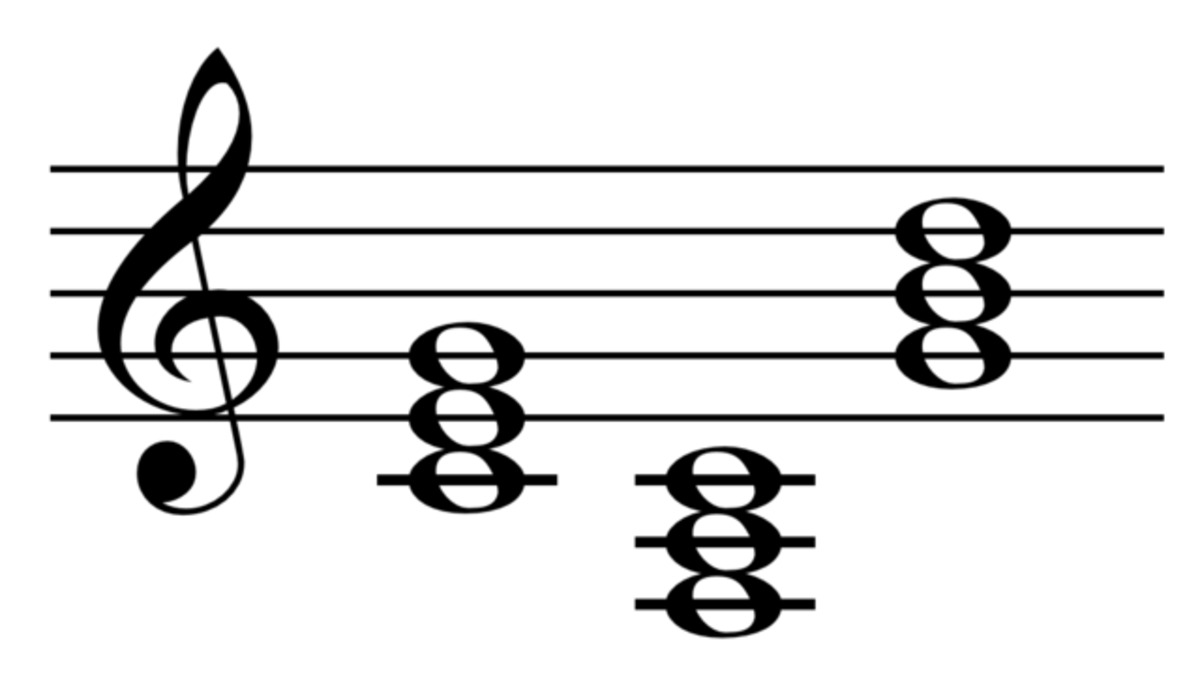Home>Production & Technology>Music Theory>What Are The Roman Numeral Music Theory


Music Theory
What Are The Roman Numeral Music Theory
Published: January 30, 2024
Discover the secrets of Roman numeral music theory and expand your understanding of music with this comprehensive guide. Explore the fundamentals and advanced concepts of music theory.
(Many of the links in this article redirect to a specific reviewed product. Your purchase of these products through affiliate links helps to generate commission for AudioLover.com, at no extra cost. Learn more)
Table of Contents
Introduction
Music theory is a fascinating discipline that seeks to understand and explain the inner workings of music. It provides a framework for analyzing and interpreting musical elements such as melody, harmony, rhythm, and structure. Within music theory, various systems and notations have been developed to aid in this analysis, including the Roman numeral system.
The Roman numeral system, derived from ancient Rome, has found its way into music theory as a means of representing musical chords and their relationships within a key. It provides musicians and composers with a shorthand notation to describe chord progressions, analyze harmonic functions, and create engaging melodies.
Understanding the use of Roman numerals in music theory is crucial for any musician or aspiring music theorist. It allows for a deeper comprehension of music composition, improvisation, and analysis. In this article, we will explore the Roman numeral system in music theory, its applications, and its contributions to understanding chord progressions and harmonic structures.
Whether you are a seasoned musician or just starting your musical journey, delving into the realm of Roman numeral music theory will unlock new dimensions of music appreciation and proficiency. So, let’s dive in and explore the fascinating world of Roman numerals in music theory.
Roman Numerals in Music
Roman numerals have been used in music for centuries as a method of representing chords and their relationships within a key. In this system, uppercase Roman numerals (I, IV, V) represent major chords, while lowercase numerals (ii, iii, vi) represent minor chords. The use of Roman numerals allows musicians to analyze and understand chord progressions in a key-independent manner, making it a valuable tool in music theory.
One of the primary applications of Roman numerals in music is chord analysis. By assigning numerals to chords, musicians can easily identify the relationships between chords within a key and analyze the progression of harmonies in a piece. This analysis enables musicians to make informed decisions about chord substitutions, variations, and progressions, enhancing their overall musical expression.
Another key use of Roman numerals is in harmonic analysis. By assigning numerals to chords, musicians can determine the harmonic function and stability of each chord within a key. For example, the tonic (I) chord typically represents the home or resting state of a piece, while the dominant (V) chord creates tension and leads to resolution.
Roman numerals are also used to analyze and interpret complex chord progressions. By examining the pattern of numerals, musicians can identify common chord progressions and understand how different chords lead to one another. This knowledge is particularly useful for songwriters and composers looking to create melodic and harmonic interest in their music.
It is worth noting that the Roman numeral system is not limited to representing chords built on the diatonic scale. It can also be used to represent chords outside the key, borrowed chords, and modal interchange. This flexibility makes the Roman numeral system a powerful tool for analyzing and understanding various musical genres and styles.
Overall, the use of Roman numerals in music provides a standardized and concise method for analyzing and understanding chord progressions and harmonic structures. It empowers musicians to navigate key relationships, identify chord functions, and create compelling musical compositions. So, let’s continue our exploration of the Roman numeral system in music theory and delve deeper into its intricacies.
The Roman Numeral System
The Roman numeral system, as applied to music theory, assigns specific uppercase and lowercase Roman numerals to represent major and minor chords, respectively. This system provides a concise and universal way of representing chord qualities and their relationships within a key.
The Roman numeral system is based on the major scale, which serves as the foundation for most Western music. Each note within the major scale is assigned a corresponding Roman numeral, with the tonic (or first note) represented by the numeral I. The subsequent notes in the scale are then assigned numerals sequentially, with uppercase numerals representing major chords and lowercase numerals representing minor chords.
For example, in the key of C major, the C major chord is represented by the Roman numeral I, the D minor chord as ii, the E minor chord as iii, and so on. This pattern continues throughout all the keys, allowing musicians to analyze chord progressions and harmonic structures in a key-independent manner.
The major chords in the Roman numeral system are represented by I, IV, and V, while the minor chords are represented by ii, iii, and vi. These chords, along with their respective numerals, form the foundation of most chord progressions in Western music. By understanding and utilizing these numerals, musicians can create harmonically rich and interesting compositions.
It is important to note that the Roman numeral system is primarily used for diatonic chords, which are chords built from the notes of a major or minor scale. However, the Roman numeral system can also be applied to non-diatonic chords, such as borrowed chords or chords from other modes. This allows for even greater flexibility and exploration in composition and analysis.
In addition to uppercase and lowercase Roman numerals, there are a few additional symbols that can be used in the Roman numeral system. A superscript circle (°) is used to indicate diminished chords, while a superscript plus sign (+) is used to indicate augmented chords. These symbols further expand the possibilities for chord analysis and notation.
Overall, the Roman numeral system provides musicians and music theorists with a powerful tool for analyzing chord progressions, understanding harmonic relationships, and composing compelling music. It allows for a standardized and efficient representation of chords within a key, unlocking a deeper understanding of the underlying structure and potential of a musical composition.
Application of Roman Numerals in Music Theory
The application of Roman numerals in music theory is vast, encompassing various areas of analysis, composition, and performance. Let’s explore some of the key applications of Roman numerals in music theory.
One of the primary applications is in chord progressions. By using Roman numerals to represent chords, musicians can easily analyze and categorize common chord progressions. For example, the I-IV-V progression represents a basic harmonic framework found in countless songs across different genres. This knowledge allows musicians to create engaging and memorable chord progressions in their compositions.
Roman numerals also play a crucial role in modulations, which are key changes within a musical piece. By using Roman numerals, musicians can identify the relationships between chords in different keys, facilitating smooth and effective modulation transitions.
Furthermore, Roman numerals aid in improvisation and jazz theory. Musicians can use them as a guide to navigate through chord progressions and create melodic lines that harmonically connect with the underlying chords.
Another valuable application of Roman numerals is in harmonic analysis. By examining a progression of numerals, music theorists can determine the harmonic function and role of each chord within a key. This knowledge helps in understanding why certain chord progressions sound pleasing or create tension and resolution.
Roman numerals also allow composers and arrangers to experiment with chord substitutions and variations. By understanding the relationships between different numerals, musicians can create unique harmonic textures while still maintaining the intended tonal center of a piece.
Moreover, Roman numerals provide a standardized language for communicating musical ideas and collaborating with other musicians and composers. Whether it is writing out chord charts, analyzing someone else’s composition, or discussing harmonic concepts, the use of Roman numerals ensures clear and efficient communication.
Overall, the application of Roman numerals in music theory serves as a powerful analytical and compositional tool. It enables musicians to understand and create harmonically rich compositions, improvisations, and arrangements. By incorporating Roman numerals into their musical vocabulary, musicians can enhance their understanding of harmonic structures and broaden their creative possibilities.
Common Chord Progressions Using Roman Numerals
Chord progressions are the backbone of many popular songs across various genres. The use of Roman numerals to represent chords allows musicians to analyze and understand these progressions in a key-independent manner. Let’s explore some of the most common chord progressions using Roman numerals.
One of the most widely used progressions is the I-IV-V progression, also known as the “three-chord trick.” In this progression, the tonic (I) chord, the subdominant (IV) chord, and the dominant (V) chord are played in sequence. This progression can be heard in countless songs and provides a solid foundation for catchy melodies and harmonies.
Another popular progression is the I-V-vi-IV progression. This progression became particularly prominent in the 2000s and is often referred to as the “pop-punk progression” or the “four-chord song.” The progression typically starts with the tonic (I) chord, followed by the dominant (V) chord, the relative minor (vi) chord, and finally the subdominant (IV) chord.
The I-iii-vi-IV progression is another commonly used chord progression. In this progression, the tonic (I) chord is followed by the mediant (iii) chord, the relative minor (vi) chord, and then the subdominant (IV) chord. This progression offers a melancholic and introspective feel and is often found in ballads and softer genres of music.
The I-V-vi-iii-IV progression, often called the “sensitive female chord progression,” gained popularity in the 2010s. This progression features the tonic (I) chord, the dominant (V) chord, the relative minor (vi) chord, the mediant (iii) chord, and finally the subdominant (IV) chord.
While these are some of the most common chord progressions using Roman numerals, there are countless other progressions in use. Musicians and composers often modify and adapt these progressions to create unique and interesting musical arrangements.
Understanding these common chord progressions using Roman numerals provides musicians with a foundation to explore and experiment with their compositions. By analyzing these progressions, musicians can gain a deeper understanding of how harmony works and how different chords interact within a key.
It is important to note that while these progressions serve as a starting point, artists should use them as a foundation for creativity and personal expression. Experimenting with variations, substitutions, and extensions can result in unique and innovative musical compositions.
As you continue to explore music theory, familiarize yourself with these common progressions and consider them as tools to inspire your own musical creations. Remember, while Roman numerals provide a framework, your creativity and musical intuition are what will shine through in your compositions.
Analyzing Chord Functions with Roman Numerals
When analyzing music with Roman numerals, one of the most valuable insights gained is the ability to understand the function and role of each chord within a key. By assigning numerals to chords, musicians can identify patterns and relationships that contribute to the overall harmonic structure of a piece.
Understanding chord functions allows musicians and music theorists to decipher how chords create tension, resolve, or provide stability within a musical composition. Let’s explore the common chord functions and how they are represented using Roman numerals.
The tonic (I) chord holds the primary function in a key. It represents the tonal center and is often referred to as the “home” chord. The tonic chord provides a sense of resolution and stability, creating a sense of rest and completion.
The dominant (V) chord has a dominant function. It creates tension and a sense of harmonic motion, often leading to a resolution back to the tonic chord. The dominant chord is considered one of the most important chords in Western music, as it drives the progression and provides a strong sense of direction.
The subdominant (IV) chord functions as a chord of departure or mild tension release. It adds richness and depth to the progression and often precedes the dominant chord, creating a sense of anticipation and setting up the resolution back to the tonic.
The mediant (iii) and submediant (vi) chords have mediating functions. They provide a smooth transition between different chords in a progression and can create emotional contrasts within a piece. These chords contribute to the overall flow and movement of the music.
The supertonic (ii) and subtonic (vii) chords have predominant functions. They create a sense of anticipation or preparation for the dominant chord. These chords often lead to the dominant chord and contribute to the overall tension and release in a composition.
When analyzing a piece of music, identifying the functions of each chord using Roman numerals provides valuable insights into the harmonic structure. It allows musicians to understand the tension and resolution patterns, explore chord substitutions, and create variations to add interest and depth to their compositions.
It’s essential to note that while Roman numerals provide a framework for analyzing chord functions, they are not inflexible rules. Musicians can experiment with variations, alterations, and non-diatonic chords to create unique harmonic progressions and evoke specific emotions.
By developing an understanding of chord functions and their representation through Roman numerals, musicians can gain a deeper appreciation for the interplay of chords and create more expressive and captivating musical compositions.
Advanced Concepts in Roman Numeral Music Theory
While understanding the basics of Roman numeral music theory can greatly enhance one’s understanding of chords and harmony, there are also advanced concepts that delve deeper into the complexities of music analysis and composition. Let’s explore some of these advanced concepts.
One advanced concept is the use of secondary dominants. A secondary dominant is a chord that functions as the dominant of a chord other than the tonic. It is indicated by adding the numeral V before the Roman numeral of the chord it resolves to. For example, a secondary dominant leading to the vi chord in the key of C major is represented as V/Vi. Secondary dominants can add chromaticism and tension, adding excitement and interest to a progression.
Modal mixture, also known as modal interchange, involves borrowing chords from parallel major or minor keys. This technique adds unique flavor and emotional color to a composition. For example, borrowing the iv chord from the parallel minor key in a major key can create a bittersweet or melancholic mood. Modal mixture expands the harmonic palette and offers new possibilities in chord progressions and emotional expression.
Another advanced concept is the use of borrowed chords or modal interchange chords. Borrowed chords are chords that are borrowed from a different key but still maintain their function and role within the original key. These chords are indicated using lowercase Roman numerals with accidentals. For example, borrowing the bVI chord from the parallel major key in a minor key can create an unexpected harmonic shift.
Chromatic mediants are chords that share two common tones and are a third apart. For example, in the key of C major, the chromatic mediant chords would be E major and Ab major. These chords provide an unexpected harmonic shift and can create a sense of contrast and color in a composition.
Modal interchange and chromatic mediants are just a couple of examples of the advanced concepts that can be explored within Roman numeral music theory. These concepts offer possibilities for unique chord progressions, emotional expression, and compositional creativity.
As musicians dive deeper into Roman numeral music theory, they will encounter even more advanced concepts such as extended chords, altered chords, and modulation to distant keys. These concepts allow for more intricate harmonic exploration and can be found in complex classical compositions, jazz harmonies, and progressive or experimental music.
By mastering these advanced concepts, musicians can express themselves more fully within the language of music. These tools open up endless possibilities for innovative compositions, compelling chord progressions, and captivating harmonic journeys.
Conclusion
The use of Roman numerals in music theory provides musicians with a powerful framework for analyzing and understanding chord progressions, harmonic relationships, and the overall structure of a composition. By assigning numerals to chords, musicians can easily navigate through different keys, identify chord functions, and create harmonically rich compositions.
Throughout this article, we have explored the various applications of Roman numerals in music theory. From analyzing chord progressions and understanding chord functions to delving into advanced concepts such as secondary dominants, modal mixture, and chromatic mediants, Roman numeral music theory offers a comprehensive system for deciphering the intricate language of music.
By incorporating Roman numerals into our musical vocabulary, we gain the ability to communicate and collaborate with fellow musicians and composers more effectively. This standardized notation system allows for clear and efficient communication of musical ideas, facilitating the creation of harmonically rich and engaging compositions.
As you continue your musical journey, consider exploring and incorporating Roman numeral music theory into your practice. Familiarize yourself with common chord progressions, analyze harmonic structures, and experiment with advanced concepts. Embrace your creativity and trust your musical intuition as you navigate the diverse possibilities that Roman numerals offer.
Remember, while Roman numerals are a valuable tool, they are just one aspect of music theory. Music is an art form that goes beyond notation and analysis. It is the expression of emotions, stories, and experiences. So, use Roman numeral music theory as a guide, but never limit yourself to its boundaries. Let your passion for music guide you on a journey of exploration, growth, and self-expression.
With Roman numeral music theory as your foundation, may you create beautiful melodies, harmonies, and compositions that resonate with the depths of your soul and touch the hearts of others.











